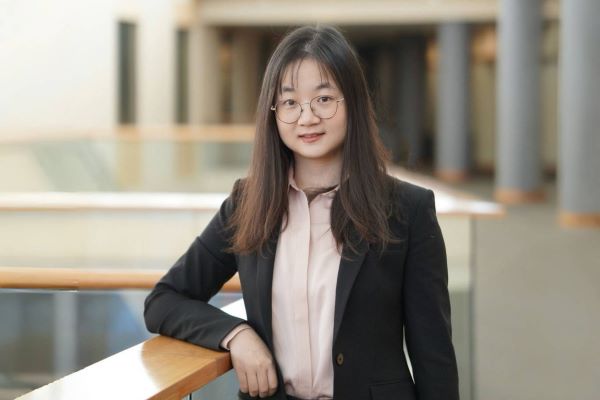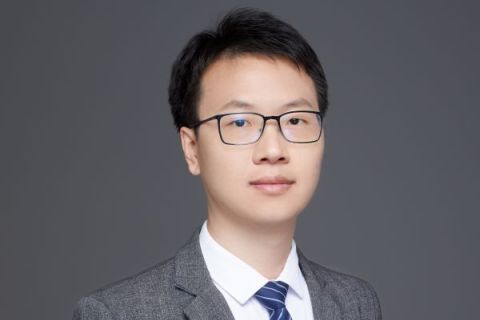
By Vince Chong
SMU Office of Research Governance & Administration – Overcrowded jails, overloaded community case managers, recidivism risks, limited budgets. The list goes on when one reflects on resource allocation concerns in the criminal justice system.
This was an issue that SMU Assistant Professor of Operations Management Gao Xiaoquan strove to improve with her research at Purdue University, U.S. She now hopes to apply her findings to similar conundrums across jurisdictions or in other public sectors like healthcare, especially after the research found some degree of success when adopted by a community project partner.
Stopping the Revolving Door: MDP-Based Decision Support for Community Corrections Placement, Professor Gao explained to the Office of Research, uses the Markov Decision Process (MDP) – a mathematical framework for making decisions over time in uncertain and dynamic environments – to capture the key trade-offs faced by the U.S. jail diversion system when deciding how and where to place individuals.
“Importantly, the paper provides theoretical results showing that, under certain conditions, the model can help break the system’s harmful feedback loop,” Professor Gao said. She was referring to the vicious cycle where overcrowded incarceration facilities or overburdened Community Corrections (CC) systems, with ineffective remedial programs, contribute to recidivism and more crimes being committed, which then leads to more serious overcrowding and overburdening.
While the model makes some simplifying assumptions, it is “designed to reflect the complex balance between public safety, resource constraints, and long-term outcomes”.
Stopping the Revolving Door was coauthored by Associate Professor of Management Shi Pengyi, and Professor of Biomedical Engineering Kong Nan, both of Purdue University. It is currently under revision at the prominent Operations Research journal.
Even though its findings centred on the U.S. criminal justice system, specifically the state of Indiana, Professor Gao believes the research, using different perimeters, may be applied across jurisdictions as well as to healthcare.
After all, both sectors share similar constraints such as limited space in terms of incarceration facilities and hospitals, as well as a limited number of professionals, specifically case workers in the justice sector and medical staff in healthcare.
Using MDP to stop the “revolving door”
Jail crowding, notes Stopping the Revolving Door, is a “prominent challenge” to the U.S. criminal justice system, with the number of incarcerated people per capita more than quadrupling over the past four decades. Generally, jails cater to incarceration sentences of less than a year, while prisons hold longer-term offenders.
In recent years, the paper notes, the jail population in the U.S. reached 750,000 inmates, on the back of a record high 2.3 million individuals held in both jails and prisons.
What makes it worse, it continues, is the “well-known ‘revolving door’ phenomenon”, with over 75 percent of released individuals rearrested within five years. What usually happens is that these individuals often face difficulties when rebuilding their lives, including obtaining access to housing and education, as well as employment and rehabilitation opportunities. This then affect how well they reintegrate into society and raises the potential of recidivism.
As the paper observes, how an individual is directed to jail or CC is a “far more multifaceted” process than what it appears to be.
“For clear-cut cases such as those involving serious violent offenses or first-time low-level drug offenses, human (judge) experiences are likely to be sufficient,” it notes, adding that in such cases, placement recommendations are mainly driven by individual costs.
However, in “grey area” cases, many more factors need to be considered, and decisions are then not always consistent. For instance, while congestion in jail or CC programs are factors recommended in prosecuting guidelines, the system largely follows a “siloed” nature. This occurs where decision-makers such as judges make placement choices on an individual case-by-case basis, and only consider system-level effects when resources are overcrowded or overloaded.
To tackle this, Professor Gao’s research developed a new approach to prove superconvexity – a function that mainly focuses in one direction – for a mathematical model that shows that spreading out the placement of individuals in different directions will lead to lower system-level costs, than if they were concentrated in one direction.
What resulted was an analytics-based framework that studies placement decisions from a system-wide, more holistic perspective.
And encouragingly, as a first step towards helping decision-makers take a broader perspective, this analysis has already been used by a community partner “to inform real-world decision-making”.
Practical success
Tippecanoe County Community Corrections (TCCC), an Indiana state institution running CC programs, partnered the academics and not only provided detailed context and data sets, but also acted as a successful case study of the research framework.
Based on variables specific to the TCCC, the research examined “the benefit of capacity expansion from the cost-effectiveness perspective”. The framework’s analysis concluded, among other things, that increasing the number of case managers at TCCC to 15, from 11, would roughly cost an extra US$2.4 million. On the other hand, the cost savings from avoided recidivism – and therefore overcrowding jails – in a three-year window could be as high as US$40.7 million.
Consequently, the publicly funded TCCC used the research results to justify hiring three more case officers. While this fell below the recommended number based on research analysis, said Professor Gao, it remains encouraging that authorities acted on the paper’s findings.
Such findings are again not always similar, she added. For instance, variable data sets in another jurisdiction could support increasing incarceration space rather than the number of CC staff.
“In such a situation, perhaps expanding incarceration facilities means implementing better reskilling or re-education programs,” Professor Gao said.
“This may also reduce recidivism and, therefore, crime at large.”
The academic has much on her plate going forward, including a more theoretical research project in behavioural and mental health, as well as telemedicine – areas that also face resource allocation issues.
“At the end of the day, I hope that my research can lead to better utilisation of resources in the public sector, that it can make a difference to society at large,” she said.
Back to Research@SMU May 2025 Issue
See More News
Want to see more of SMU Research?
Sign up for Research@SMU e-newslettter to know more about our research and research-related events!
If you would like to remove yourself from all our mailing list, please visit https://eservices.smu.edu.sg/internet/DNC/Default.aspx

